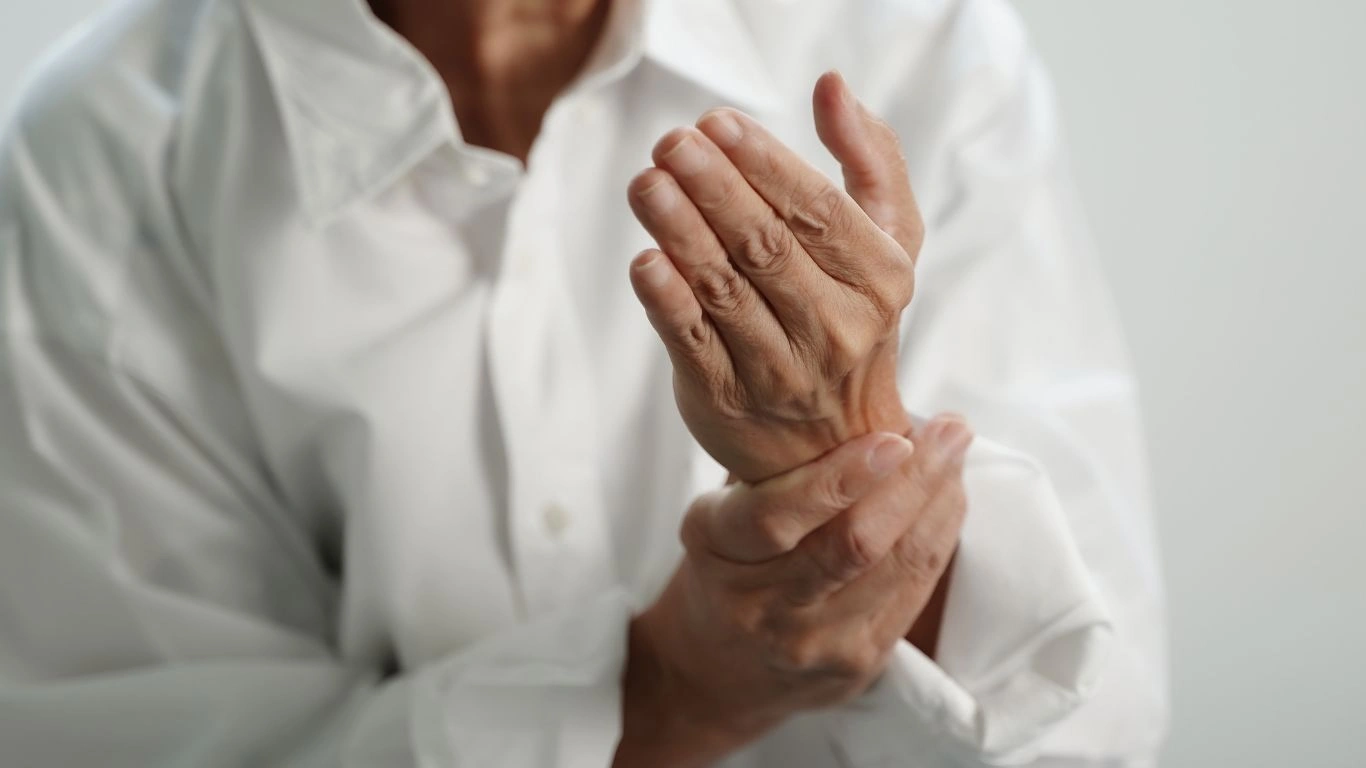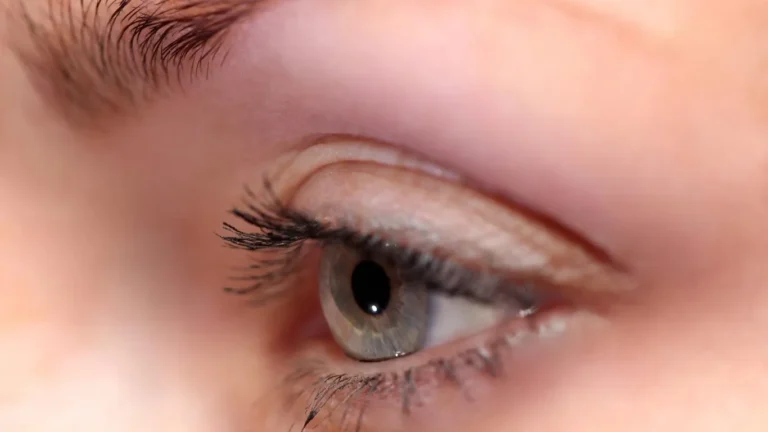Can Rheumatoid Arthritis Cause Shortness of Breath? Know the Hidden Danger
Can rheumatoid arthritis cause shortness of breath? If you’ve ever worked in rheumatology—or lived with RA yourself—you’ve probably heard this question more than once. As a nurse practitioner in the field, I’ve had countless patients bring this up, usually after a flare-up or a bout of unexplained fatigue. It’s not something we always associate with joint disease, right? I mean, when you hear “rheumatoid arthritis,” you probably think swollen fingers, achy knees, and maybe morning stiffness that seems to last forever. But breathing issues? That tends to catch people off guard. The truth is, RA isn’t just about joints. It can have some sneaky systemic effects that go way beyond what we can see on an X-ray.
Rheumatoid Arthritis: More Than Just Joints

When I first started out in rheumatology, I assumed most of our cases would revolve around joint pain and fatigue. But pretty quickly, I realized RA has a mind of its own. It’s an autoimmune condition, meaning the body’s immune system mistakenly attacks its own tissues. And while joints are the most visible victims, the inflammation can also spread to other organs—including the lungs. That’s where shortness of breath starts to creep in.
We’re talking about a disease that’s system-wide. I like to tell my patients, “RA isn’t just crashing the joint party—it’s making rounds all over the house.” So yes, it absolutely can affect breathing. But let’s break down how and why that happens, because it’s more than one single cause.
How RA Impacts the Lungs
There are a few major ways RA can lead to breathing issues, and they’re not always obvious at first. In fact, some of them can sneak up on people years after their RA diagnosis. Here are the most common culprits:
- Interstitial Lung Disease (ILD): This is probably the most serious lung complication tied to RA. ILD causes inflammation and scarring in the lungs, which can make breathing feel tight and shallow over time. It doesn’t always show symptoms right away—sometimes it’s only caught during routine imaging or when someone starts noticing breathlessness walking up stairs.
- Pleuritis: This is when the lining around the lungs gets inflamed. Think sharp chest pain when breathing in deeply. It’s uncomfortable, but it can usually be treated effectively if caught early.
- Rheumatoid nodules in the lungs: These are less common but still possible. They’re small, firm lumps that can form in lung tissue. They usually don’t cause major problems unless they get large or become infected.
- Airway obstruction: Chronic inflammation can affect the small airways, leading to symptoms similar to asthma or chronic bronchitis. Wheezing, coughing, and—you guessed it—shortness of breath.
One patient of mine, let’s call her Marie, had been managing her RA pretty well for years. Then she started telling me about feeling winded just walking to her mailbox. At first, she blamed it on aging or maybe her asthma acting up. But when we looked closer, a high-resolution CT scan showed signs of ILD. That’s how subtle and confusing these symptoms can be.
Can Rheumatoid Arthritis Cause Shortness of Breath? Absolutely, and Here’s Why It’s Often Missed

Now let’s talk real talk—this symptom gets missed all the time. Patients often don’t mention it because they’re focused on joint pain, or they think it’s just them being “out of shape.” Providers might not ask about it unless they’re already suspicious of lung involvement. It doesn’t help that breathing issues can come from a dozen other things—heart disease, anemia, anxiety—so RA doesn’t always top the list.
But here’s the thing: RA-related lung disease can be subtle at first. It doesn’t necessarily hit like a freight train. It might just start with a dry cough that won’t quit. Or you might notice you’re avoiding stairs without realizing why. I always tell patients, if something feels off, mention it. Don’t assume it’s nothing.
Who’s at Higher Risk?
Not every person with RA will have lung problems, but certain folks do seem more prone to it. Here are a few risk factors we keep an eye on:
- Men with RA: Interestingly, while RA is more common in women, men are more likely to have severe lung involvement.
- Smokers or former smokers: Smoking can increase the risk of both RA and lung disease, so this combo can be especially risky.
- People with high RA disease activity: If your RA flares are frequent or severe, you’re at greater risk of lung complications.
- Those with certain autoantibodies: Lab tests like positive RF (rheumatoid factor) and anti-CCP can be associated with higher chances of extra-articular issues, including lungs.
In clinic, I’ve seen this play out more times than I can count. You start piecing things together—a little breathlessness here, a dry cough there, maybe some unusual fatigue. It’s like being a detective, except the mystery is happening inside someone’s lungs.
Why Diagnosis Can Be Tricky (And What To Watch For)

There’s no single test that screams, “Yep, this is RA-related lung disease!” Instead, we rely on a mix of patient history, physical exams, imaging (like chest X-rays or CT scans), and sometimes pulmonary function tests. Even then, it’s not always crystal clear.
That’s why building a relationship with your rheumatology team matters. We get to know your baseline, so we can spot changes early. When someone like Marie comes in and says, “You know, I’m just not breathing the same,” we listen. Because that tiny sentence could be the start of something we need to catch before it gets worse.
What It Feels Like: Patient Experiences with RA-Related Breathing Trouble

I can’t tell you how many times a patient has looked at me and said something like, “I just thought I was getting older,” or “I figured I was out of shape.” That’s the thing—shortness of breath from RA doesn’t always feel dramatic. It can sneak in quietly. You don’t wake up one day gasping for air. Instead, it builds slowly, until one day you’re avoiding certain tasks or taking longer to catch your breath after doing simple things like vacuuming or walking your dog.
One gentleman I worked with—let’s call him Ron—had been managing RA for nearly a decade. But when he started skipping his morning walks, his wife knew something was up. He wasn’t in more joint pain than usual, but he said he just “couldn’t catch his breath.” Sure enough, after a workup, we found signs of interstitial changes in his lungs. We started treatment right away, and he told me later that just being believed and taken seriously was half the battle. He’d been afraid he was being dramatic. You’re not.
Spotting the Symptoms Early
If you’re wondering what to look for, here are some early signs of RA-related lung issues that I tell patients to watch closely:
- Getting winded from low-level activity (walking to the kitchen, climbing a single flight of stairs)
- Dry, persistent cough that doesn’t go away with allergy meds or cold remedies
- A “tight chest” feeling that makes deep breathing uncomfortable
- Fatigue that feels out of proportion to your usual RA flares
- Wheezing or subtle changes in your voice or breathing pattern
Of course, these symptoms could be something else entirely—which is why we don’t jump to conclusions. But we also don’t ignore them. In RA, your lungs deserve just as much attention as your joints.
Diagnostic Tools: How We Evaluate Breathing Symptoms in RA

When someone with RA comes in complaining about breathing changes, we usually go through a step-by-step approach. It’s not one-size-fits-all, but here’s what typically happens:
- Physical exam and history: We ask detailed questions—not just about lungs but also energy levels, joint pain patterns, past infections, and any environmental exposures (like mold, smoking, etc.).
- Pulmonary function tests (PFTs): These measure how well your lungs are working. We look at how much air you can move in and out and how efficiently your lungs exchange oxygen.
- High-resolution CT scan (HRCT): This is key for spotting interstitial lung disease or nodules. Way more precise than a regular chest X-ray.
- Oxygen saturation monitoring: We’ll check if your oxygen levels dip during activity, even slightly.
- Referral to pulmonology: Sometimes we bring in a lung specialist, especially when we suspect more complex conditions like ILD or bronchiectasis.
I always remind patients, we’re not just looking for scary diagnoses—we’re trying to get a clear picture so we can protect your lungs early. The earlier we identify an issue, the better we can manage it.
Managing Breathing Complications in RA

Once we know what’s going on, the next step is managing it. The good news? There’s a lot we can do. No, we can’t reverse fibrosis or cure RA completely, but we can absolutely slow things down and improve your quality of life.
Medications That Can Help
There’s no one-pill solution here, but several medications are used depending on what we’re treating:
- Immunosuppressants: Drugs like methotrexate, azathioprine, or mycophenolate can help reduce inflammation if lung involvement is confirmed.
- Biologics: Certain biologics, like rituximab, may be safer in patients with ILD, while others like TNF inhibitors can be more complicated (always case-by-case).
- Steroids: Short-term use of corticosteroids like prednisone can calm inflammation quickly, but long-term use comes with side effects we try to avoid when possible.
- Antifibrotics: In some cases, drugs like nintedanib are used for progressive ILD to slow scarring.
We tailor treatment to each person, and I always encourage open dialogue. If a patient tells me, “This med makes me feel awful,” I take that seriously. There’s almost always another option or a tweak we can make.
Non-Medication Strategies
It’s not all about pills and injections. Lifestyle matters too:
- Stop smoking. If you smoke or even used to, that conversation is a priority. Smoking plus RA is a dangerous combo for the lungs.
- Exercise—gently but consistently. Pulmonary rehab or light walking helps keep the lungs working and your stamina up.
- Get vaccinated. Pneumonia and flu can hit harder in RA patients, especially with lung involvement. Don’t skip those shots.
- Monitor changes closely. Keeping a symptom journal can help identify patterns—when you get winded, how long it lasts, what you were doing at the time. That stuff really helps us figure out next steps.
It’s about staying proactive. You don’t need to become obsessed with every cough or yawn, but if you feel like something is different, speak up. Trust that inner radar—you know your body better than anyone.
The Emotional Side: Living With RA and Breathing Symptoms
I’d be lying if I said this part gets enough attention. When you’re already juggling chronic joint pain, the idea of adding lung issues to the mix can feel overwhelming. I’ve had patients break down in my office—not because they’re scared of the meds, but because they’re tired. Tired of being strong. Tired of explaining that no, they’re not lazy, and no, they’re not overreacting.
One of the biggest gifts we can offer, both as providers and as humans, is validation. I always make time for these conversations. A few extra minutes listening, some tissues on the desk, a real plan—that makes all the difference. Breathing should feel automatic, effortless. When it’s not, it impacts every part of your life—from relationships to sleep to mental health.
And if you’re reading this and nodding along, wondering if that shortness of breath you’ve been brushing off is “just RA,” let this be your nudge to dig a little deeper. You’re not imagining it. And you don’t have to go it alone.
Staying Ahead of It: Long-Term Monitoring for RA-Related Lung Issues

Now, let’s talk about the long haul. Once we’ve identified that your breathing troubles are linked to rheumatoid arthritis, the journey doesn’t just stop there. In fact, that’s when the real partnership between you and your healthcare team kicks into high gear. I always tell my patients, “We’re not just putting out fires—we’re preventing new ones.”
Consistent follow-up is key. That might mean pulmonary function tests every 6–12 months, or even more frequently if your symptoms shift. I usually check in during regular rheumatology visits and coordinate with pulmonology when needed. It’s like tag-teaming your care for full-circle support.
We also keep an eye on medication effects. Some RA treatments can impact the lungs, while others actually protect them. It’s a balancing act. I’ve adjusted therapy countless times based on subtle changes in oxygen levels or increased fatigue. You don’t have to wait until things get “bad enough.” Early adjustments often prevent bigger issues down the road.
Knowing When to Call Your Provider
I always tell my RA patients, “Call me sooner than you think you should.” Here are some signs to reach out about:
- A cough that lasts more than 2–3 weeks, especially if it’s dry and nagging
- Increased shortness of breath with light activity
- New or worsening chest discomfort
- Unexplained drop in energy or oxygen saturation (if you use a pulse oximeter at home)
We’d much rather evaluate a symptom that turns out to be nothing than miss something important. You’re not being dramatic. You’re being proactive. That’s the difference.
Lifestyle Shifts That Really Do Make a Difference

I can’t stress this enough—what you do outside the clinic matters just as much as what happens inside. I’ve seen dramatic differences in how patients manage their RA and lung symptoms just by leaning into a few sustainable changes.
Move Your Body—Even When You Don’t Feel Like It
I know, easier said than done when your joints ache and you’re out of breath. But gentle activity really does help improve lung capacity and oxygen flow. Think:
- Short walks (indoors if needed)
- Chair yoga or stretching routines
- Pulmonary rehab programs (often covered by insurance!)
One of my favorite patient success stories is a woman who started with just five minutes of daily movement. Within a few months, she was walking a half mile without stopping. We celebrated every small milestone, and her lung function actually improved on follow-up testing. Little wins matter.
Nutrition That Supports the Whole System
There’s no magic anti-RA diet, but some eating patterns definitely help reduce inflammation—and inflammation is what we’re trying to tame here.
- Omega-3 rich foods: salmon, flaxseed, walnuts
- Colorful produce: berries, leafy greens, bell peppers
- Whole grains and legumes: for fiber and gut health (which ties into immune function!)
- Hydration: enough said. It’s basic, but wildly important
If you’re not sure where to start, even chatting with a dietitian who knows RA can be game-changing.
Mind-Body Connection: Don’t Overlook It
It might surprise you how closely emotional well-being is tied to your breathing. When anxiety ramps up—especially if you’re already feeling breathless—it creates a feedback loop that makes symptoms worse. I’ve had patients convinced their lungs were declining when in reality, they were experiencing panic-related dyspnea.
Here are some tools I often recommend:
- Box breathing or paced breathing techniques
- Mindfulness-based stress reduction (apps like Headspace or Calm are a great starting point)
- Therapy or counseling to help navigate chronic illness grief and anxiety
RA is relentless sometimes. You’re allowed to be frustrated, sad, tired. What matters is having tools and support systems in place to help you bounce back.
Can Rheumatoid Arthritis Cause Shortness of Breath? Final Thoughts from a Clinician’s Perspective
As someone who’s worked with RA patients for years, I can confidently say: yes, rheumatoid arthritis can cause shortness of breath—and it’s more common than you might think. But it’s not something you just have to accept or live with silently.
Early recognition, ongoing monitoring, collaborative care, and lifestyle tweaks all play a role in protecting your lungs and preserving your quality of life. It’s about seeing the whole person, not just their lab results or X-rays.
So, if you’re sitting there wondering if that breathlessness you’ve been feeling could be part of your RA story—this is your sign to speak up. Your voice matters, your symptoms matter, and your care should reflect the full scope of your experience. And as someone who’s sat across from countless patients navigating the same worries, trust me—you’re not alone in this.
References
- National Institutes of Health (NIH)
- Health.com
- Centers for Disease Control and Prevention (CDC)
- American College of Rheumatology
- American Lung Association
Disclaimer
This content is for informational purposes only and is not a substitute for professional medical advice, diagnosis, or treatment. Always consult with your healthcare provider regarding any concerns or symptoms. As a licensed rheumatology nurse practitioner, I share clinical insights and patient experiences to help educate and empower, but nothing here replaces individualized care.

Tarra Nugroho is a dedicated Nurse Practitioner with a strong foundation in family and preventive care. She brings both compassion and clinical expertise to her practice, focusing on patient-centered care and health education. As a contributor to Healthusias.com, Tarra translates medical knowledge into clear, empowering articles on topics like women’s health, chronic disease management, and lifestyle medicine. Her mission is simple: help people feel seen, heard, and informed—both in the clinic and through the content she creates. When she’s not caring for patients, Tarra enjoys weekend hikes, plant-based cooking, and curling up with a good health podcast.






